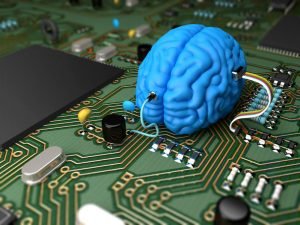How to Remember Anything…
& Accelerate Learning Now

Learning is rooted in memory. I’ll save all the neuroscience, the shocking elements of what make for a genius in the next article. Today just the fun stuff….
This is a very cool article (series), so PLEASE read every word carefully! No kidding! Do NOT skip ahead or you will ruin the fun that I have created for you!)
Let’s take a “memory test” together. It’s very simple and takes almost no time.
Please follow the instructions throughout the article carefully.
Look at these words. (At the very end of the article, in a minute, you will take the memory test. Just look at them now then read the rest of the article before you do the test.)
Yawn
Pillow
Snore
Snooze
Blankets
Dream
Bed
Snooze
Slumber
Counting Sheep
Good job…now
…have you ever been to Disneyland or Disneyworld?
Remember when you shook hands with Bugs Bunny? (Or your kids or watching one of your friends or some people you didn’t know shake hands with Bugs?) Bugs was always very cool I thought.
Now, if you’ve never been to Disney then of course you don’t remember this but you got a clear picture in your mind of meeting Bugs because you’ve seen TV footage of Disney and you have seen Bugs. So you get the idea.
What is really interesting is that Bugs isn’t at Disney. Bugs is a Warner Brothers character like Elmer Fudd. Disney has Mickey Mouse and Pluto and Goofy and all those guys. You didn’t see Bugs at Disney.
I pulled a fast one on your memory. I confess. I DID meet Bugs at Marriott’s Great America in Gurnee, Illinois when the park opened there in 1975. I was the first visitor ever there. Met Mr. Marriott and everything. Now it’s a Six Flags or something. But Bugs lived there not at Disney….but you know what is interesting?
LOTS OF PEOPLE have vivid memories of meeting Bugs at Disney after being presented the same false suggestions I just offered you. About 1/3 of people who are suggested with a completely false memory, just like I did with you, believe that “memory.” Sometimes more, sometimes less depending on how the “memory” is presented. (Fake photography, verbal suggestion, written word)
Now, that does not mean that it’s the same 1/3 that can experience false memory. A lot of it has to do with who has been to Disney and who hasn’t. The point is that it’s pretty easy to implant false memory. Would you be good enough to drop me a note and let me know what happened in your mind when I asked if you met Bugs at Disney? Thanks!
Now, you might think that this is an exceptional case. How about this: Elizabeth Loftus (one of the world’s timeless and leading memory researchers) performed a fascinating experiment. She showed a film to a group of people. The film was about a traffic accident. After the film she asked the group, “How fast was the white sports car going when it passed the barn while traveling along the country road?”
Several days later when witnesses to the film were quizzed about what they’d seen, 17 percent were sure they spied a barn, though there weren’t any buildings in the film at all. In a related experiment subjects were shown a collision between a bicycle and an auto driven by a brunette, then afterward were peppered with questions about the “blonde” at the steering wheel.
Not only did they remember the nonexistent blond vividly but when they were shown the video a second time they could hardly believe what they were seeing. It was nothing like they remembered it. Loftus concluded that hints leaked to us by our fellow humans override the scene were sure we’ve seen with our own eyes.
In another Loftus experiment done in the 1970s the film is different. The people view slides of a pedestrian-auto accident. They also see a slide of a red Datsun at a yellow Yield sign. The group was asked, “Did you see the other car pass the Datsun while it was stopped at the Yield sign?” The biased recall group however was asked an even more biased question: “Did you see another car pass the Datsun at the stop sign?” Later most of the biased group remembered a Stop sign instead of a Yield sign! The verbal information again leaked into the visual recall. Suggestion changes perception. And can easily create false memories.
If you’ve been utilizing hypnosis as a therapist for any period of time you already know this and use all of this information to the benefit of a client. Your client will regress to some pretty bizarre stuff that never happened quite the way they think it did and they will tell you with God as their witness that it did happen and in their MIND it did happen but just because they took you “there” doesn’t mean much, as you’ve probably discovered!
===
Stop.
REMEMBER The List I gave you at the very beginning of the article?
Please don’t look at the words.
Just write the words down that you remember on a piece of paper. Quick. Go do it now before you forget them. You can get your result at the end of the article! Keep reading.
===
===
Did you write the words down that you remember from the list at the top of the page?
Did you at least write the word “sleep” down?
1/3 of all participants do and that’s good because that’s how memory works when people are paying attention.
Oh OK, Go look and see how you did!
The funny thing is that “sleep” isn’t on the list.
Memory is a very interesting thing…and we are going to have much more to say about it in the coming months.
Everyone has their skill sets. Memory is one of mine. Unfortunately for the U.S., we’ll continue to see IQ decline as people move away from learning technology that simply is inferior. This doesn’t have to be you. Why? People want sound bytes. Most people want Tik Tok. The 20 second story. People DO get the (often false) information they come to believe in 15 second sound bytes. And that is a person who has no future beyond answering a phone. If people refuse to learn the critical art of story and metaphor, all which require books, writing, paper and ink, then they are screwed. And frankly I couldn’t care less.
2022 was the first year in decades (maybe 50 years) that the average IQ of students DROPPED.
(I know, grab the paddles you are in shock with me…pfft.)
Well no kidding…
STOP:
Are you SURE Sleep wasn’t in the list at the top of the page?
Just checking. You’ll get another chance in just a sec.
I sent our newest IC member a few copies of Boot Camps from about a decade ago. He asked me how I could possibly go through the first hour of presenting on Day 1 of each of the Boot Camps and singling out almost 20 people and asking about their wife, by name, kids, by name, their jobs at their company.
The only people I didn’t address on those day 1 presentations in 2012, 2013, 2014 were my Inner Circle Members. In other words. I was already connected with those people.
I was talking strictly with people new to the event. I simply talked to them from the stage and learned from their answers who they were, what they did, what kind of parents they were. Stuff like this. Very fast. 1 minute per person max. There’s a lot of other people in the audience of 50 -100 that want to learn about influence.
Most people were never taught HOW to LEARN in the first place, forget the memory part that comes second.
…now you can.
Accelerating Learning includes improving just 7 Fundamental Skills and Factors
- Creative Imagination (or Thinking)
- Association
- Repetition
- Story
- Memory
- Environmental Signals
- Context
These are the tools you need to greatly enhance your ability to remember anything you want. If you look closely at the words listed above, you will see that these tools are things you already do well. (Your imagination is better than you give yourself credit for, I promise.)
You will learn how to combine these elements as you discover the processes of building a master’s memory.
Best of all…it’s easy. It only requires application.
Creative Imagination (or Thinking) for Accelerated Learning and Improved Memory
Creative imagination, by definition, is the process of bringing something to being by forming mental pictures or images. It is worth noting that the only limitation to your success in remembering anything lies within the extent to which you develop and use your imagination.
Strengthen your Creative Powers for Accelerated Learning and Improved Memory
Consciously trying to solve problems and puzzles causes demand on your creative imagination. The proverbial exercise for the “muscle” if you will. The more you use your creative powers, the stronger they become.

All great achievers learned to form the habit of constantly doubting and questioning themselves, then coming up with creative and practical/workable ideas which today, are great gifts to the world. Developing this skill will be of immense benefit to you – both now and in your future.
Doubting and questioning causes people to find solutions and create uncertainty about things. That’s a good thing because it means your brain will go to work to solve and resolve. People who regularly do this are far more successful and have a much wider scope of success in many aspects of life. People who “know everything” from the get-go…well…they are the kind of people who are boring to talk to and don’t know half of what they wish they knew.
Association for Speed Learning and Retrievable Memory
In the ancient world, a trained memory was an immense asset, particularly in public life. There were no convenient devices for taking notes, and early Greek orators delivered long speeches with great accuracy because they learned the speeches using Mnemonic systems. The Greeks discovered that human memory is largely an Associative process – which works by linking things together.
Legend Point: All we wish to remember must be associated in some way with something we already remember.
Anything you remember now, you have associated in this way. The trouble is that most of our associations are made non-consciously. When you have learned how to consciously associate anything you want to remember to something you already know, then you will have a trained memory and you will also begin to remember things in a way you have never remembered before. It’s really as simple as that.
Legend Key: The principle is that, You Can Remember Any New Information If You Associate or Link It to Something You Already Know or Remember.
Association means to make mental connections between ideas, or in this case, between something you want to remember and what you can already easily remember.
Legend Strategy: Associations are formed by linking together the things you wish to remember into a story, and then “titling” your story with something you already know.
The story should be meaningful to you to help you easily remember it. I like to form a totally ridiculous or illogical story; such stories are also easier to remember. If something funny, surprising or weird happens in a story, it becomes easy to remember.
So there are elements of story where you associate stuff and there are the associations themselves.
One week, I was working at Mutual of Omaha. there were a slew of people whose names and family stories, I felt compelled to remember. There was Vic and the first time I looked at him I imagined a tiny Michael Vick running a victory lap on and around one of his shoulders.
There was Mark. I pictured my son (same name) sitting on top of his nose.
Christine. I saw my imagined picture of Christ on her necklace and then thought that’s the reason she looks so happy.
Linda, I imagined my sister Lynn coming out of Linda’s suit pocket going “duh” “duh” “duh.”
I also remember names and events in ways that are flat out inappropriate to tell you about in public, but ask me when you see me next time how I really remembered Christine’s name….it wasn’t quite how I told you.
🙂
I didn’t lie. I left out details.
🙂
You will soon be able to form exciting, erotic, violent, intense associations in very short time intervals that cement in memories. This is particularly helpful for remembering things that have no context.
Remembering names, places, numbers, codes, passwords, statistics, lists, presentation order of information, most people’s names in a room of 50 or 100 for the day, etc…
You take 20 minutes today to learn this material and you’ll be able to use it the rest of your life…cool huh?
Repetition for Accelerated Learning and Improved Memory
Every long-term memory has an expected lifespan. With time; we start to forget information or facts that are stored in our long- term memory. This means that, no memory is stored indefinitely, including memories of those things that are most important to us, such as the names of family members. Use it or lose it…matters.
The fact is this: without continuous repetitions, information can neither be moved into the long term memory, nor be retained in the human mind indefinitely.

When you create a memory, pathways are created between your brain cells.
It is like clearing a path through a dense forest. The first time that you do it, you have to fight your way through the undergrowth. If you don’t travel that path soon, very quickly, it will become overgrown and you may not even realize that you have been down that path before. If, however, you travel along that path before it begins to grow over, you will find it easier than your first journey along that way.
Legendary Magic: You ALWAYS use pen and paper to take notes of everything you want to remember.
Legendary Magic Why: You will need to review the notes you took today, tomorrow. Then to keep it simple you’ll review them again in 1 week, 1 month and 1 year. Then annually for as long as you want your new highways in the brain to stay attached so you can speed along.
Legendary Warning: If you only put your notes in your phone or laptop, you are an idiot. Got that? Stupid. Feel the pain now. You will remember nothing, learn nothing and you’ll never sit with me at a blackjack table because I only play with people that learn fast and remember faster.
using your memory: the more times that you repeat patterns of thought when learning new information, the more likely you would recall that information… because you wrote this down… it makes new highways in the brain. But the first creation sucks.
Remember it like this: The literal translation of Genesis 1:1 is, “In the beginning the God(s) began creating the heavens and earth. It had become a vast wasteland and ruin. Then on the first day…the Gods said, Let There Be Light and it was, the evening and the morning, the first day.”
That is the same thing that will happen to your new memory. It will become a wasteland because it’s not the taking of the notes that sticks a memory long term in your brain files. It’s the pattern of review and usage that does that. Otherwise that earth will become a ruin, the highways will be over-run, and you won’t really ever be able to use it/them again because they atrophy (get old and die).
So, repetition keeps your memory refreshed and helps you retain information for as long as you want to.
It’s as simple as that.
You’ll remember it because you see something new in the translation you hadn’t heard before.
All knowledge is subject to gradual decay. Even your own name is vulnerable. However, strong memories are very unlikely to be forgotten because of the frequency of their re-occurrence or repetition. For example: You hear and repeat your name daily, so the probability of forgetting your name is like the possibility of getting hit by an asteroid, which although possible, may never happen in a person’s lifetime.
Now, the point has been made that – without repetitions we gradually and finally forget any information we may want to retain in our minds. A famous study shows that after listening to a lecture, students forget more than 90% of the material after 14 days, and a related study shows that students forget 79% of text book material 14 days after reading.
That’s what you get for “listening” or “listening and sticking the notes in your laptop.” Good luck with all that.
I’ve always doubted these studies because the retention rate in my experience with myself and others has always been much worse. But we’ll stick with the research…for now.
To overcome this natural “fading” effect of short-term memory, you must recall and repeat what you want to remember. With each repetition, the brain moves the information into longer term portions of memory, such that, with subsequent reviews, information decay is continuously slowed down. So we don’t forget as fast.
What this means is that a constellation of neurons becomes linked together by neural pathways, creating a semi-permanent memory. (Permanent until it isn’t used, then atrophy sets in and you don’t remember…)
So that’s the scoop. Now that you get what happens in real life you want to know the most effective way to carry out these repetitions.
Are you to re-read or re-listen to a piece of information every single day or hour of your life, just for the sake of retaining such information? Could that be the much sought after path to effective information retention?
Not for most stuff. But having Kevin Hogan on audio in your car or on your phone and listening once makes for an interesting listen. Listening 3-6 times will cause those thinking processes to replicate in your brain.
That’s the beauty of repetition.
The ‘Spacing Effect’
Spaced repetition (or spacing effect) is a technique in which increasing intervals of time are used between subsequent reviews of materials or information. Spaced repetition originates from the way memory works. Initially, we need to make an early review of the learning material, to make sure it is retained in memory. However, as the material gradually gets consolidated, the review may be less and less frequent.
Ideally, if you are in seminar with me, you take notes. (You remember more and can use the material more if you take notes….don’t take notes and you may as well not have attended.)
You then review the notes you wrote (not the information in the manual) at the end of the day before bedtime. 10-15 minutes is good for a 1/2 day of information.
The brain will process and reprocess that information while you sleep.
Because it was what went in last it will be cemented as long as it’s reviewed again tomorrow night for 5-10 minutes.
After that you want to review material that you want to remember once after a week, then once after a month, again after six and then a year. That half day can be revisited in minutes with good notes.
Once information is fixed in your long-term memory, the interval of repetition may be gradually increased for longer periods, even for years.
The frequency and intervals between repetitions when learning would depend on you, your retention ability, and the type of information you wish to retain. But I have also provided some facts from research, which you could use as your own frame of reference.
If you learn a foreign word, you will need to repeat it within 10 minutes, then 24 hours, and again tomorrow night and then within 3-7 days to ensure optimal retention.
And then again, 25-30 days later and again within six months. After a few repetitions like these, you will store information for recall for years.
From the study by researchers of calculations that underlie spaced repetition, if we aim to maximize the speed of learning at a steady 95% recall rate, most well-formulated knowledge for a well-trained student will call for the first review at the end of the night. Then the end of the next night, and then again in one week.
Worth noting: We remember what we understand, we understand only what we pay attention to, and we pay attention to what we want.
What about subliminal material?
We’ll talk about that in the subliminal programs. It’s entirely fascinating and helpful in a different context. We have no data that shows it improves long term memory or long term learning but it can be effective in triggering present moment or soon to happen behaviors.
The Power of Association for Learning and Memory
You can remember any new information if you associate or link it to something you already know or remember.
OK….let’s get to the cool stuff…
Association Techniques for Improved Memory
Chaining is mainly used with any information which has to be learned in a sequence. Speeches, presentations, stories, recipes, jokes, formulas and lists are just a few examples of information which must be learned in sequence. Chaining is the stuff of metaphor and stories which are one of the two ways we learn. Sadly you learn, well, nothing from Instagram posts, Tik Tok, Facebook. You name it. (I can show you some examples of how you personally could but it’s exhausting and not worth our time today.)

Chaining can be divided into two strategic formats:
a) The Link Method
b) Creating moving mental pictures or story method
Both methods are brilliant and both “work” perfectly well.
The link method is very cool…you associate the things-to-be- remembered, one item to the other, such that you form a flowing image containing all the items. They are chained, starting with the first item, which is associated with the second, the second with the third, etc.
The very first item can be associated with the desired outcome or the reason for the list that must be remembered.
Quick example:
Laura’s non-Jewish shopping list:
(I don’t eat some of these things, which makes it VERY EASY to remember them.)
- Apple
- Olive oil
- Rice
- Biscuits
- Shrimp
- Cheese
- Sausage
- Soda
- Milk
- Bread
To remember this list, you must connect or tie up two objects at a time using mental association. Your associations must be strong if you are going to remember them later and it must be meaningful to you.
There are some helpful tips you could apply when forming mental associations/ pictures, which would help make your associations strong and long lasting.
Proportion: In all your images, try to distort size and shape. Picture images as being: huge, gigantic, enormous etc.
Conversely, you can make things microscopically small. Your images should be out of proportion.
Read the first 20 pages of Alices Adventures in Wonderland. That’s what you need to do to remember things.
Exaggeration: Picture vast quantities such as gallons of salt, millions of ants, stacks of money to the moon, gold that fills a wheel barrow, GodS that create the Universe. EASY to remember.
Substitution: Substituting an out of place item in an image increases the probability of recall. An example could be eggs growing on a tree instead of oranges. (Think about one more time you’ll be thinking about it all day.)
Humor: The funnier or more absurd you can make your images, the more memorable they will be.
Movement: It’s easy to remember a mental picture in which there is movement or an action either by you, someone or something. You can picture actions such as you running, a liquid spilling etc.
Violence: Violence or confrontation can make memories stick.
Erotica: Probably the best memory strategy is to use this….
Putting a Chain, or a Link, Together
Mix up one or more techniques (key points) when forming associations. Look out for these key points as you go over Laura’s associations of the items in her shopping list. You could even underline the “key points” as you spot them. This helps you better understand how they are used in forming mental associations. This may seem like a lot of work at first. Just keep at it, your skills will definitely improve with practice. The first item on the list is Apple, so you have to link Apple to the next item on the list which is Olive oil. You could picture the following images.
Apple and Olive Oil
You are slicing an apple that is bigger than the counter, suddenly, gallons of Olive oil pours out of its center and floods your kitchen floor which you scoop into a bottle.
Olive Oil and Rice
You open that bottle of Olive oil, to find that it contains rice which splashes all over your face. “Where’d the oil go, it’s now RICE?” You take all these bottles of RICE to the Bakery in town to sell to the Baker.
Rice and Biscuits
The baker is a beat of shady character and tries to cut cost by using rice being thrown by a bride to bake biscuits, but they tasted horrible.
Biscuits and Shrimp
A pack of biscuits are dropped into a lake and thousands of shrimp swim to the surface to feed on them.
Shrimp and Cheese
The shrimp come marching out of the water and as they do they turn into Swiss Cheese.
Cheese and Sausage
The millions of piece of Swiss cheese on the beach are attacked by enormous sausages running down from the lifeguard’s booth.
Sausages and Soda
The sausages claim victory and raise their diet Cokes high in the air.
Soda and Milk
They go to taste the diet Coke and milk gushes from the bottoms of the diet Coke cans all over the beach, washing the cheese away.
Milk and Bread
In order to clean up, the lifeguards (Kate Upton and Pamela Anderson) bring loaves of bread to dab up all the milk on the beach.
If you don’t actually see the images/ pictures in your mind, you won’t remember the items on the list when you need to. People tend to remember ridiculous, sexy, violent, ludicrous, crazy, illogical, absurd and far fetched things rather than comfortable or pleasant ones.
In case you’ve been thinking that it’s easier to jot down your shopping list on a piece of paper as than to memorize it, you might be right. But how many times have you reached the supermarket or shops only to realize that you’ve left your list on the kitchen table, or in a bag or the pocket of a coat which you decided not to wear after all?
So next time you make a shopping list, take a moment to associate all the items in it. The first time, like everything in life, is the most time consuming. After that it’s a piece of cake. No wait, the shopping list doesn’t turn into a piece of cake, it’s a list…oh forget it… (don’t worry you won’t)
The most frequent challenge faced when learning the link method is how to remember the first item.
This is because; the first item is not linked to anything, and if you don’t remember the first item, you would probably not remember the next item you linked to it, and the item link to it, and so on.
Associate the first item to the subject or reason for the list. So since we are dealing with a shopping list and the first item is an apple; you form as association between grocery store and an apple. For example, you could see yourself working in the grocery store and all of a sudden MILLIONS of apples fall from the ceiling as you walk in the aisle. Great fricking store.
If you can picture that ridiculous image, or a similar goofy movie, clearly in your mind for just an instant, then you will remember the first item on your shopping list.
Memorizing a shopping list might not be relevant to you, but going through the exercise will help you understand the link method better, so you’d be able to use it in any way that’s relevant to you. Mastering the link method will also serve as a good foundation to understanding the other techniques I’ll teach you.
See you next time for the step two!
![]()
![]()
![]()






















